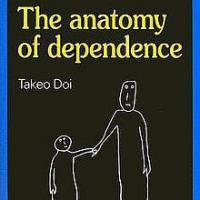Takeo Doi's "The Anatomy of Dependence," first published in 1971 and translated into English two years later, remains one of the definitive books about Japanese behavior.
This slim volume delineates the structure of amae, which translator John Bester defines as "dependence, the desire to be passively loved." Doi went to great efforts in this book to clearly explain this concept of emotional and social interdependence that he believed underpins the Japanese psyche.
The Anatomy of Dependence, by Takeo Doi, Translated by John Bester.
192 pages
Kodansha, Fiction.
He connects amae to other key Japanese concepts, including tanin (others) and enryo (restraint), giri (obligation) and ninjo (heart or humanity), and provides examples of amae from Japanese history, literature and everyday life through writing that is scholarly and exact. Although the text is dense, a close read is worth the effort — many aspects of Japanese society become clearer with an understanding of amae, from the business tradition of not leaving before your boss to the honorific words used in Japanese.
Not without its detractors (some critics dismiss Doi's ideas as a form of Nihonjinron, roughly meaning Japanese exceptionalism), "The Anatomy of Dependence" is still an important read for anyone interested in Japan. An expert in his field — Doi was a professor emeritus in the department of neuropsychiatry at the University of Tokyo — he later wrote "The Anatomy of Self," which further explored the concept of amae.
Read archived reviews of Japanese classics at jtimes.jp/essential.
















With your current subscription plan you can comment on stories. However, before writing your first comment, please create a display name in the Profile section of your subscriber account page.